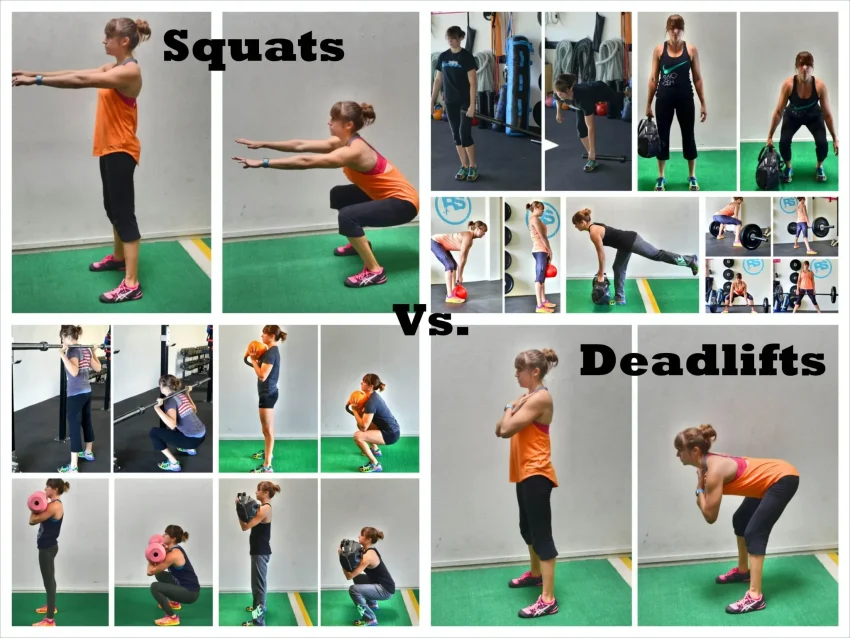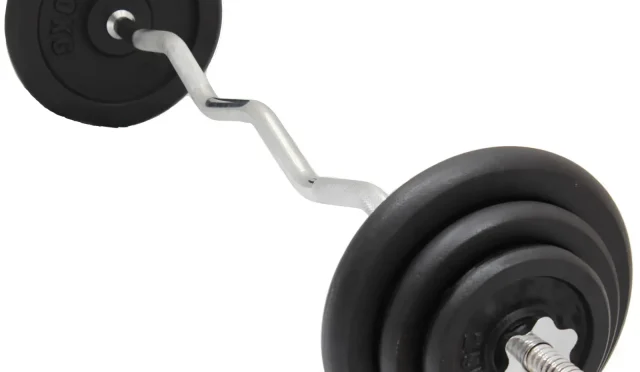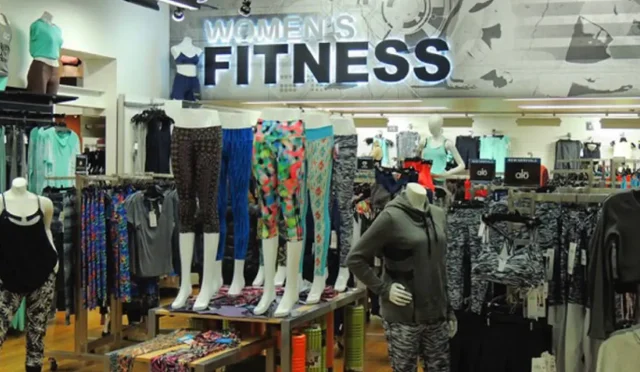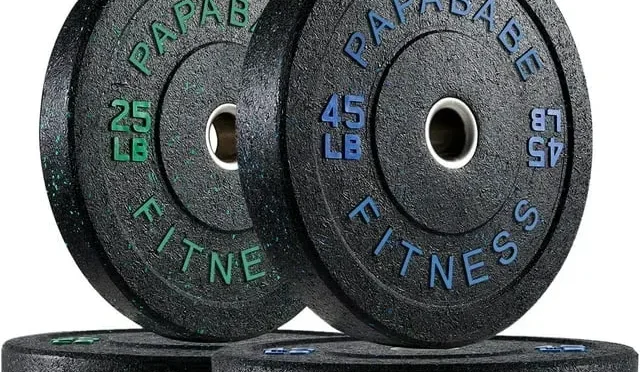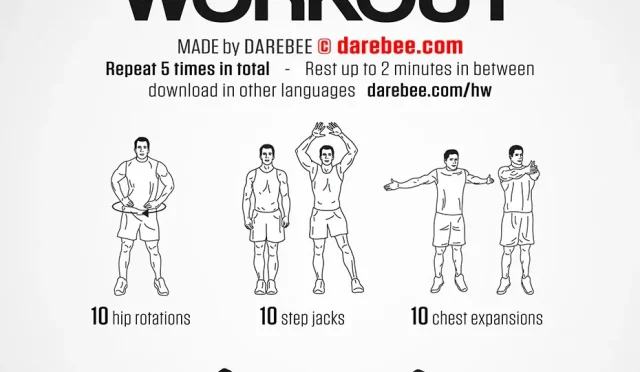Deadlift vs. Squat: Which Exercise Is Best for You?
Deadlift vs. Squat, When it comes to strength training comparison, few exercises spark debate like deadlift vs. squat. These two powerhouses of lower body workouts not only sculpt an impressive physique but also deliver distinct benefits that can enhance your overall athletic performance. The deadlift focuses on a hip-dominant approach, primarily targeting the glutes and hamstrings, whereas the squat emphasizes a knee-dominant movement, heavily engaging the quadriceps. Understanding the unique deadlift benefits and squat benefits is crucial for anyone looking to maximize strength gains and muscle development. In this guide, we’ll explore which of these fundamental lifts should command your attention based on your specific fitness goals.
In the realm of resistance training, two fundamental exercises often come to the forefront: the deadlift and the squat. Both of these lifts are hailed as staples for anyone aiming to increase lower body strength and overall athletic prowess. While the deadlift leans toward a hip-dominant movement focusing on posterior chain muscles, the squat showcases a knee-dominant profile that prioritizes quadriceps engagement. Depending on your training objectives, understanding the distinctions between these exercises can inform your workout strategy effectively. Join us as we delve deeper into the merits and challenges of including these iconic lifts in your fitness regimen.
Understanding the Benefits of Deadlifts
Deadlifts are a powerful exercise that primarily focuses on the posterior chain, including the glutes, hamstrings, and lower back. One of the most significant benefits of deadlifts is their ability to enhance overall athletic performance. By strengthening the muscles involved in hip extension, deadlifts boost explosive movements essential for sports, such as running and jumping. They also contribute to improved posture and stability, which reduces the risk of injury by reinforcing the core and spinal alignment.
In addition to enhancing athleticism, deadlifts are effective for building muscle mass and increasing strength. The exercise activates a myriad of muscle groups, encouraging growth and raising metabolic rates due to increased muscle mass. Enhanced grip strength is another significant advantage, as the heavy lifting involved in deadlifts requires strong forearm muscles, which can benefit athletes in various sports and daily activities.
Exploring the Advantages of Squats
Squats are often heralded as one of the most important exercises for lower body development. One notable benefit of squats is their emphasis on the quadriceps, making them ideal for those looking to increase the size and strength of their thighs. Additionally, squats contribute to improved athletic performance by enhancing leg power and stability, which are crucial for activities such as sprinting, jumping, and many sports that require a strong lower body foundation.
Moreover, squats have a functional application that translates into real-world movements, aiding in activities like standing up from a seated position or climbing stairs. As a compound exercise, squats also engage the core and improve overall balance, making them crucial not only for strength training but for everyday life. Therefore, squats play a vital role in building a well-rounded physique and functional fitness.
Deadlift vs. Squat: Choosing the Right Exercise
When deciding between deadlifts and squats, consider your specific fitness goals and muscle groups you want to target. Deadlifts are superior for developing posterior chain strength, which is essential for various athletic movements. They’re particularly beneficial for anyone looking to improve their hip extension, balance, and grip strength. In contrast, if your primary goal is to enhance leg size and strength, particularly in your quads, squats should be your exercise of choice. The squat targets knee-dominant movements and maximizes quad activation, which is key for muscle hypertrophy in the thighs.
While both exercises are incredibly valuable, personal preference and body mechanics should also play a role in your decision. Some individuals may find squats more comfortable due to their mechanics and desired outcomes, while others may excel with deadlifts. The best approach is to incorporate both into your routine, as they complement each other well and enhance overall strength and performance.
Comparative Analysis: Hip Dominant vs. Knee Dominant Lifts
Understanding the differences between hip and knee-dominant lifts can help you tailor your workouts effectively. Hip-dominant movements, like the deadlift, focus more on engaging the glutes and hamstrings, which can lead to greater strength in the posterior chain. These lifts are crucial for enhancing power in sports that require explosive hip extension, making them vital for athletes. Additionally, hip-dominant exercises often allow for heavier loads, enabling more significant muscle overload and development.
On the other hand, knee-dominant exercises such as squats predominantly activate the quadriceps muscles. This focus on the knee joint allows for a different range of motion and promotes muscle growth in the thighs. When training, it’s important to balance both types of movements to ensure a well-rounded lower body development that supports all aspects of athletic performance. Overlooking one can lead to imbalances and potential injuries.
Crafting a Balanced Lower Body Workout Routine
To build a comprehensive lower body workout routine, integrating both deadlifts and squats is essential. Each exercise serves its distinct purpose, targeting different muscle groups and offering unique benefits. By alternating between these lifts, you ensure that both the anterior and posterior chains are well-developed, promoting better athletic performance and reducing injury risks. Moreover, including variations of both exercises, such as sumo deadlifts or front squats, can keep your workouts dynamic and engaging.
Additionally, ensuring proper form and technique is crucial when performing either lift to maximize efficiency and minimize injury risk. It’s advisable to begin with lighter weights, focusing on mastering the movement patterns before progressing to heavier loads. Incorporating accessory exercises that complement both the deadlift and squat can further enhance strength and muscular endurance, making your lower body training more effective.
Safety Tips for Squats and Deadlifts
When engaging in deadlifting and squatting, maintaining safety is paramount to prevent injuries and ensure long-term progress. Always implement proper form; for squats, keep your knees behind your toes and ensure a full range of motion. For deadlifts, hinge at the hips and keep your back straight to avoid strain. It’s beneficial to use mirrors or seek a trainer’s guidance to correct any form issues as they arise.
Additionally, consider using appropriate footwear to enhance stability and grip during the lifts. Weightlifting shoes can provide the necessary support and elevation for safer squats, while flat-soled shoes may benefit deadlifts for better ground contact. Balancing workouts with ample rest days to allow muscles to recover is essential, as the central nervous system can become strained with high-volume training.
Common Mistakes in Deadlifts and Squats
Many individuals encounter challenges when starting with deadlifts and squats, often leading to common mistakes that affect performance. In squats, a frequent error is allowing the knees to cave inwards; this can lead to improper alignment and potential injury. Proper warm-ups and mobility work can help alleviate this issue. Likewise, maintaining an upright torso during the squat is crucial for engaging the correct muscles effectively.
In the case of deadlifts, rounding the back during the lift is one of the most common mistakes and can considerably increase the risk of injury. Ensuring the core is engaged and maintaining a neutral spine is vital for safe execution. Employing light weights initially and harnessing the power of video recordings can help identify and correct these mistakes, ensuring a sturdy foundation for progression.
The Importance of Flexibility in Lower Body Training
Flexibility plays a significant role in maximizing the effectiveness of both deadlifts and squats. Improved flexibility in the hips, hamstrings, and quads allows for a deeper and more efficient range of motion, which is key to achieving greater benefits from these lifts. Stretching and mobility work before workouts can enhance performance and reduce injury risk while promoting optimal muscle engagement during lifts.
Incorporating dynamic stretching routines into a warm-up can prepare the muscles for the demands of both exercises. Post-workout static stretching is equally important for recovery and can aid in maintaining flexibility, which alters the workload on joints and connective tissues, promoting longevity in training. Prioritizing flexibility training creates balanced strength development, making both deadlifts and squats more effective.
Tracking Progress and Adjusting Your Routine
Progress tracking is essential for anyone engaged in strength training, particularly in compound lifts like deadlifts and squats. Keeping a log of your lifts can provide insight into strength developments and help identify areas that may require more focus. This information can guide adjustments to your routine, ensuring a consistent approach towards achieving your fitness goals, whether that involves increasing load, reps, or workout frequency.
Additionally, periodically evaluating your performance and training outcomes allows for informed adjustments to your programming. If improvements plateau, it may be beneficial to switch up the types of squats or deadlift variations. Monitoring nutrition, recovery, and overall well-being will also impact progress and effectiveness in your overall routine, ensuring a holistic approach to strength training.
Frequently Asked Questions
What are the primary deadlift benefits compared to squat benefits?
The primary deadlift benefits include enhanced glute and hamstring strength, improved hip extension mechanics essential for athleticism, and significant carryover into real-life lifting tasks. In contrast, squat benefits focus on superior quad development, greater overall range of motion, and improved balance and stability. Both lifts are essential for comprehensive lower body strength.
How does strength training comparison between deadlifts and squats affect muscle development?
In a strength training comparison, deadlifts emphasize posterior chain engagement—primarily glutes and hamstrings—while squats target knee dominance, mainly developing quads. For muscle development, balance in training both lifts is crucial, as they complement each other and ensure overall lower body strength enhancements.
Why is it important to incorporate lower body workouts like deadlift vs. squat into my routine?
Incorporating lower body workouts such as deadlifts and squats is vital for overall strength, muscle growth, and functional fitness. These compound movements engage multiple muscle groups simultaneously, improving not only lower body strength but also enhancing athletic performance, body composition, and bone density.
What should I prioritize: deadlift vs. squat for functional strength improvement?
For functional strength improvement, prioritizing deadlifts may be more beneficial as they develop power in hip extension movements that translate to real-life activities. However, squats should not be neglected, as they enhance stability and quad strength, making a combination of both lifts ideal for overall functional strength.
Is deadlift more effective than squat for athletic performance?
Deadlifts are often seen as more effective than squats for athletic performance due to their emphasis on hip extension, which is crucial for explosive movements like running and jumping. However, squats also play a significant role in building foundational strength that supports athletic endeavors, making both lifts important for athletes.
| Key Features | Deadlift | Squat |
|---|---|---|
| Dominance Type | Hip-Dominant | Knee-Dominant |
| Primary Muscle Targets | Glutes, Hamstrings, Back | Quadriceps, Adductors |
| Strength Gains | Excellent for posterior chain strength and athleticism | Improves quad development and foundational strength for Olympic lifts |
| Range of Motion | Shorter range focused on hip hinge | Greater range of motion through knee flexion and extension |
| Real-Life Application | Bending and lifting heavy objects | Foundational movement for overall athletic performance |
Summary
Deadlift vs. Squat often comes down to personal fitness goals, as both exercises contribute significantly to lower body strength and muscle development. While deadlifts excel in targeting the posterior chain, squats are superior for quad dominance and range of motion. Ultimately, incorporating both into your routine will enhance overall strength and athletic performance, making them vital for any balanced workout program.
#DeadliftVsSquat #StrengthTraining #FitnessComparison #LegDayDebate #WorkoutTips

